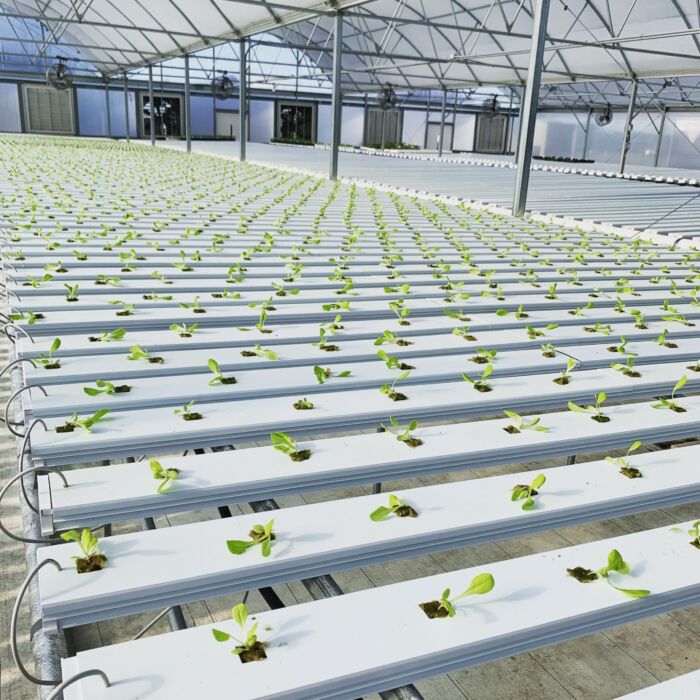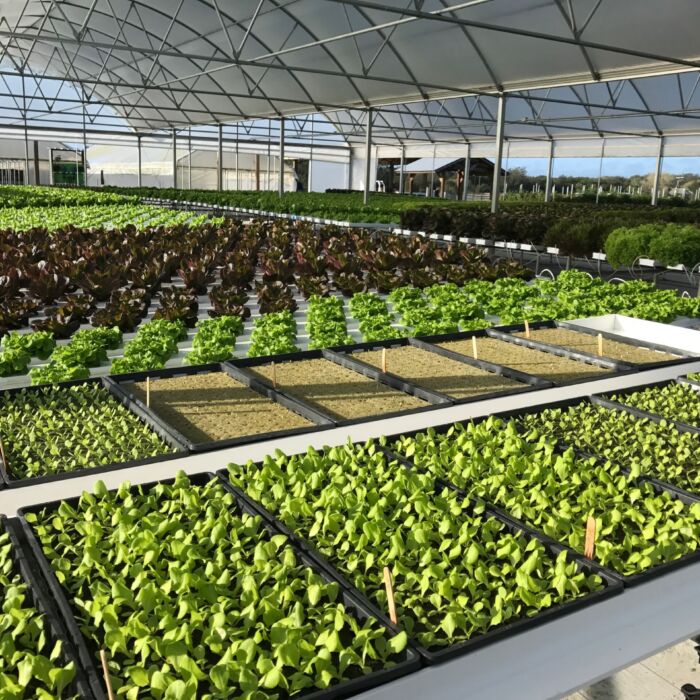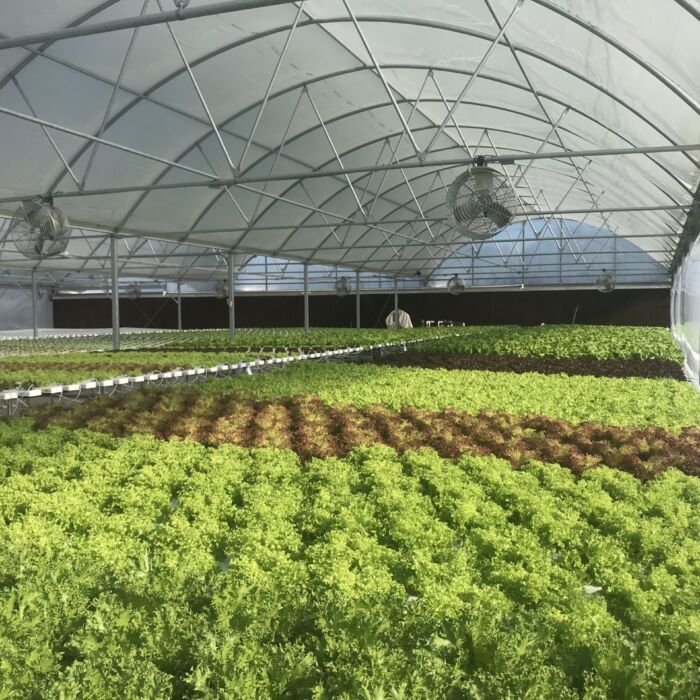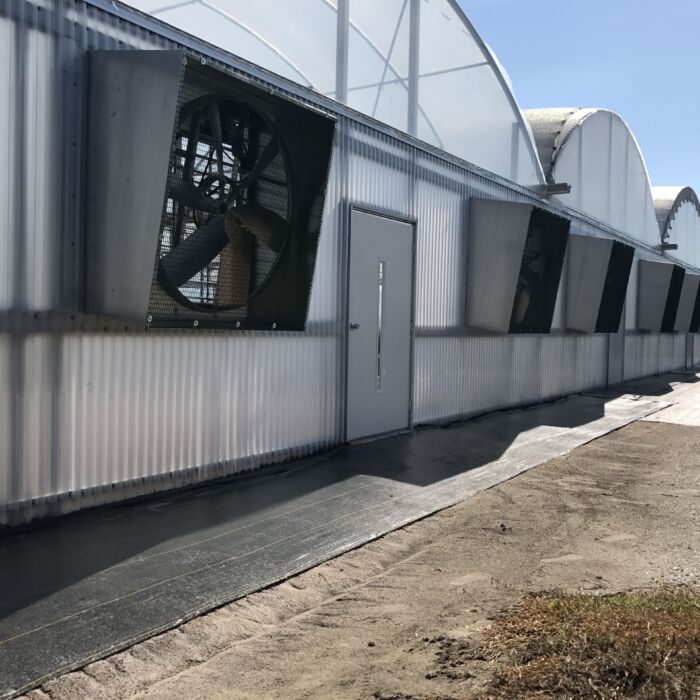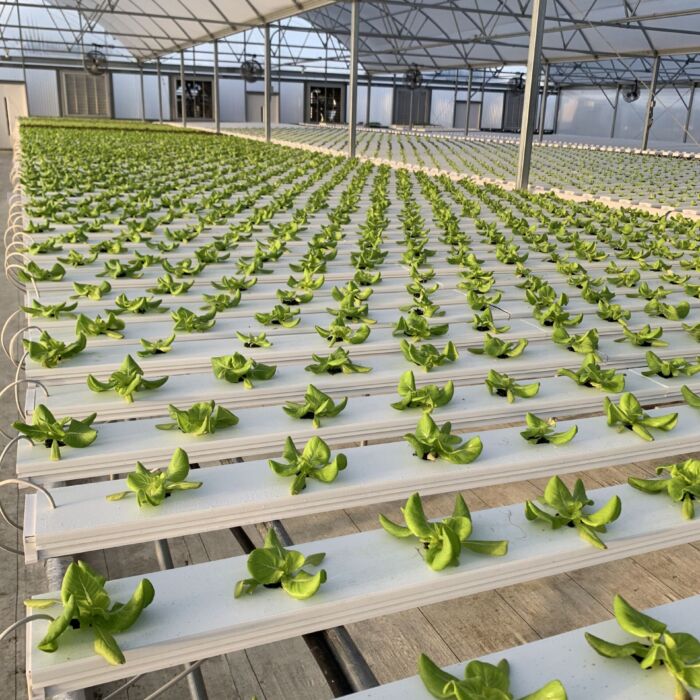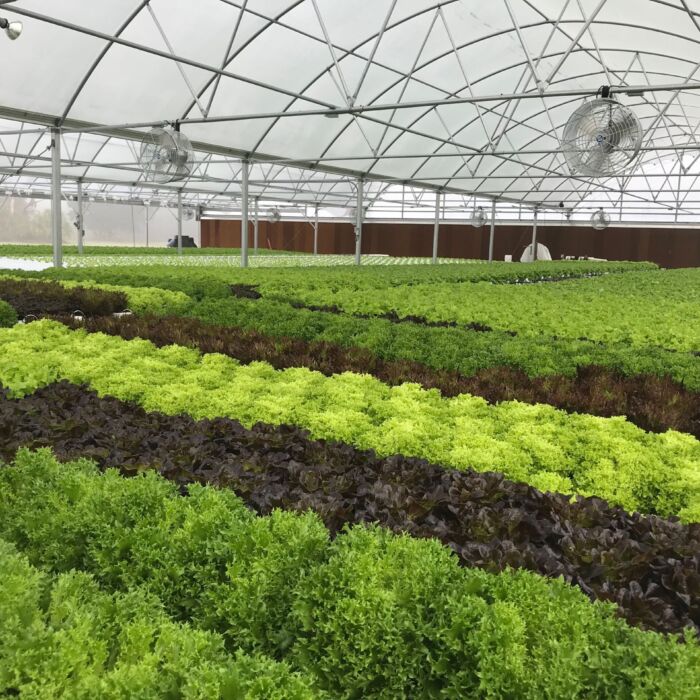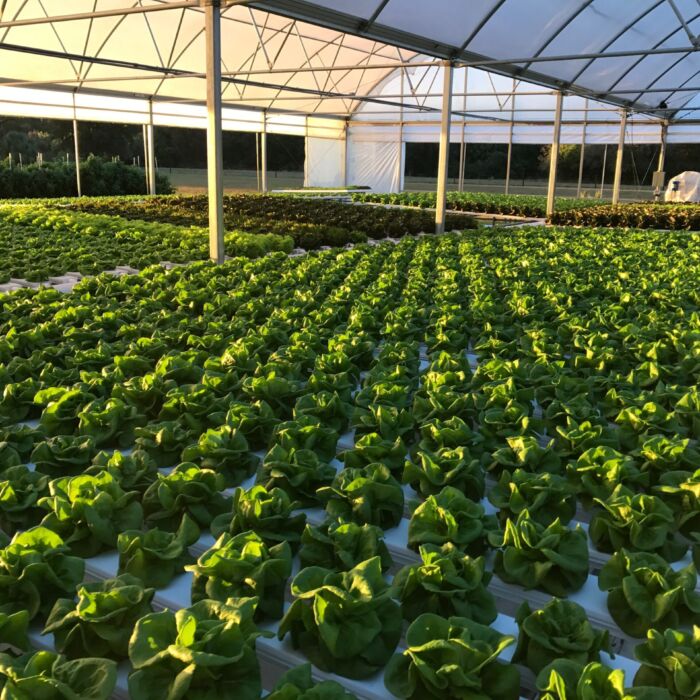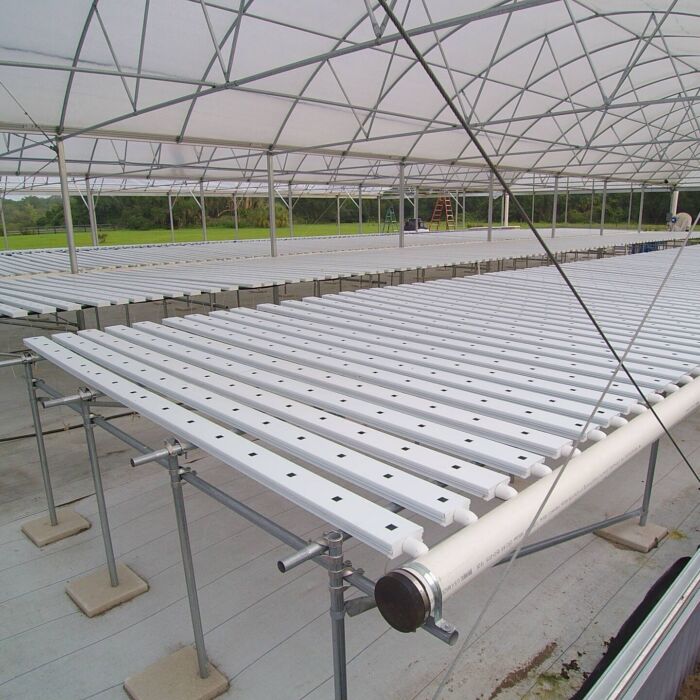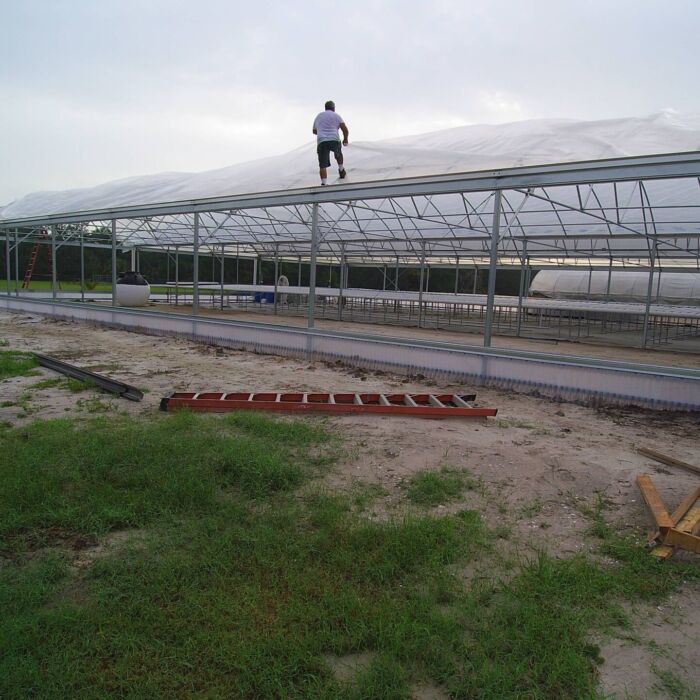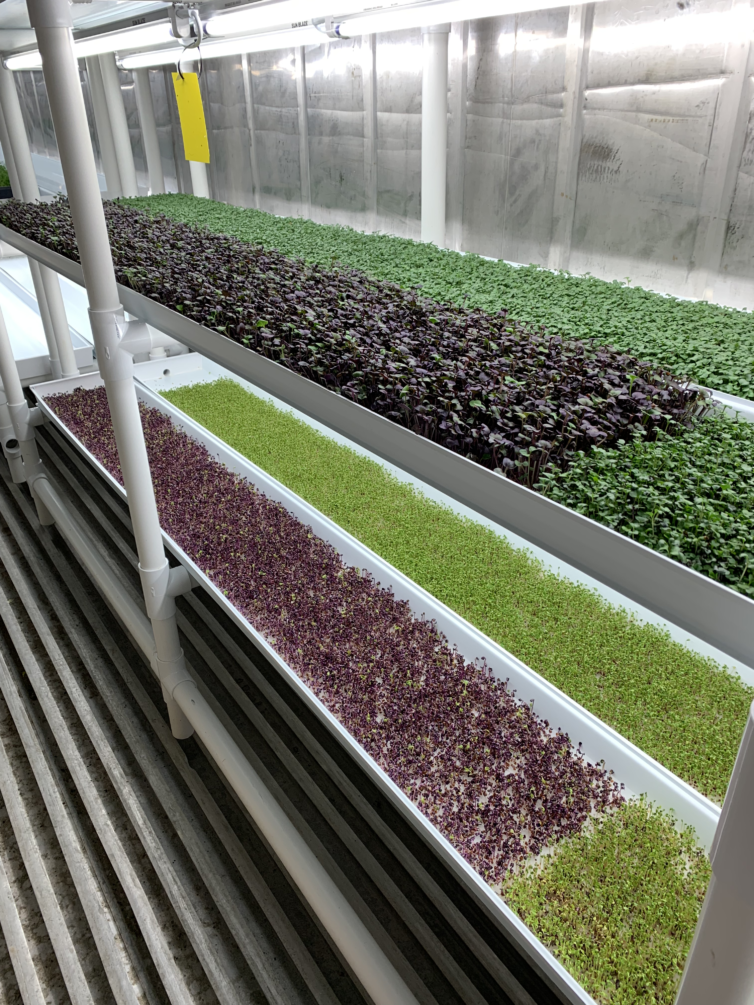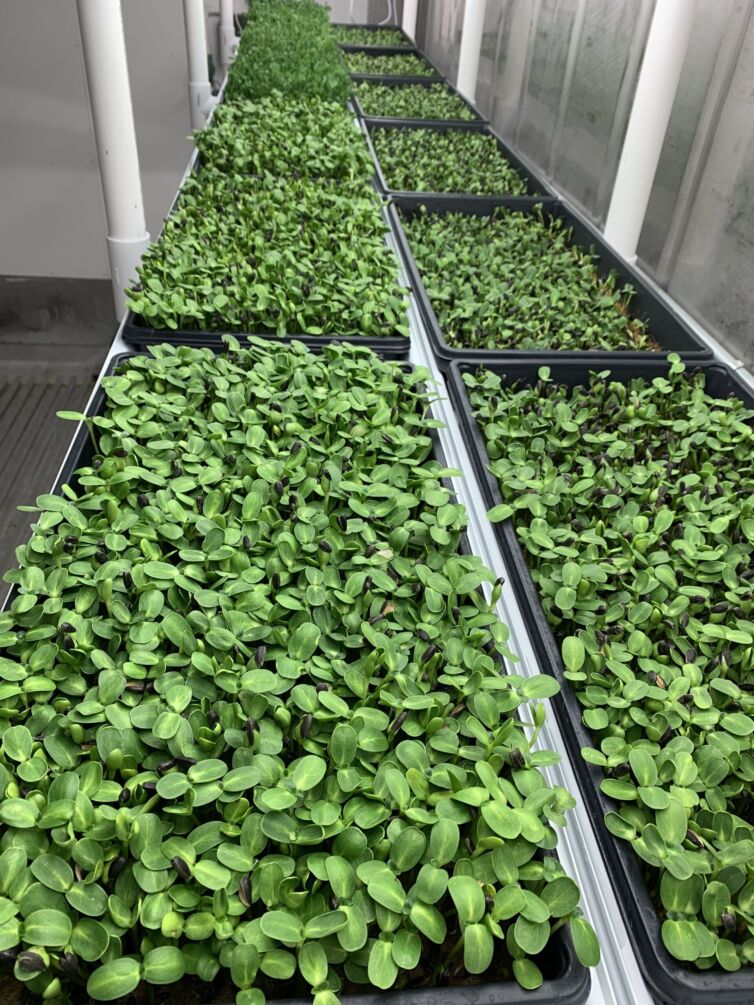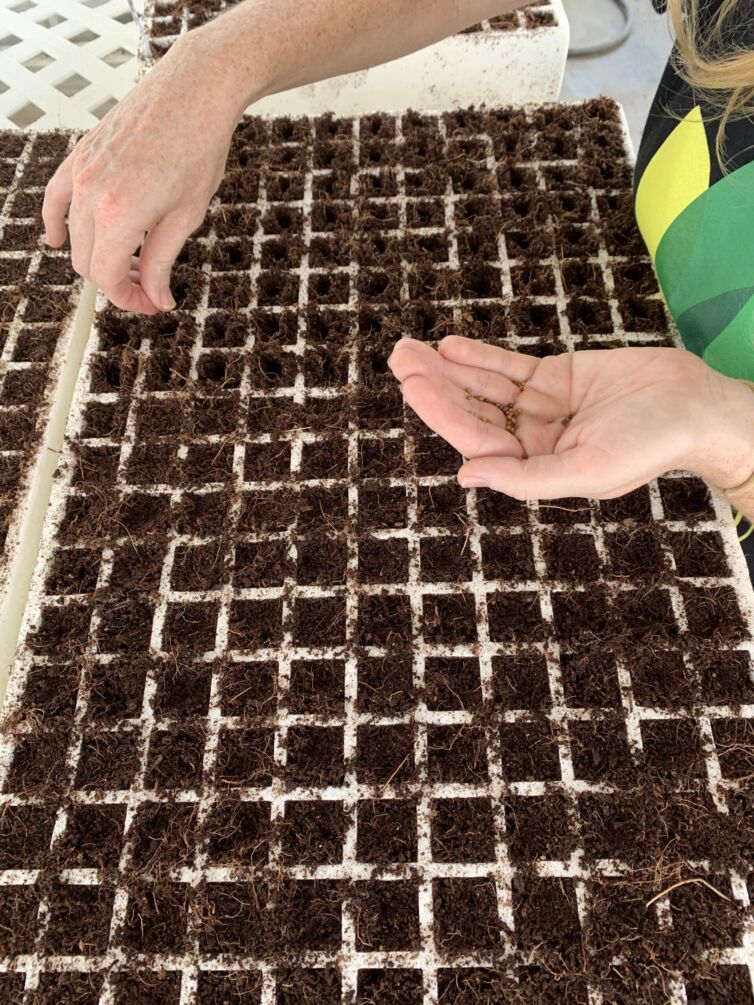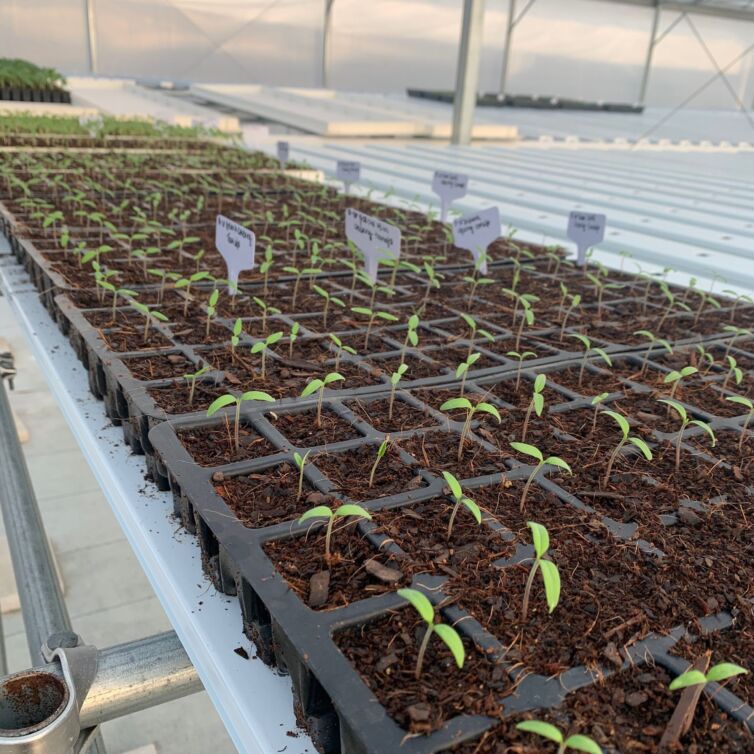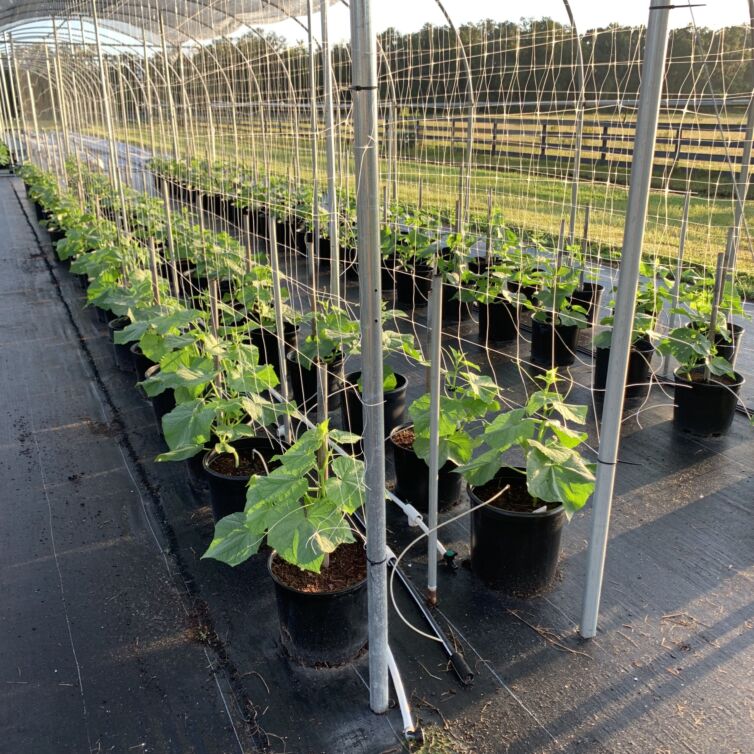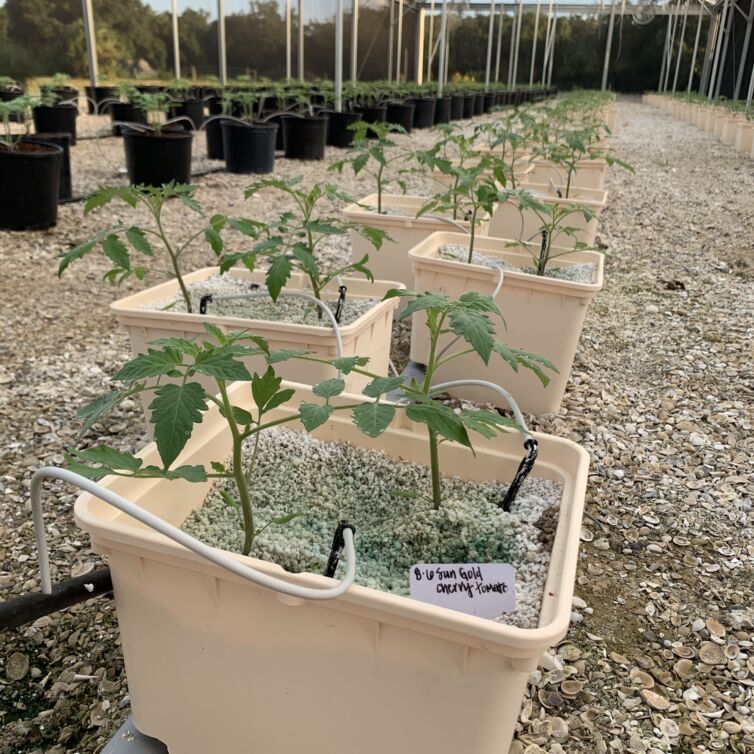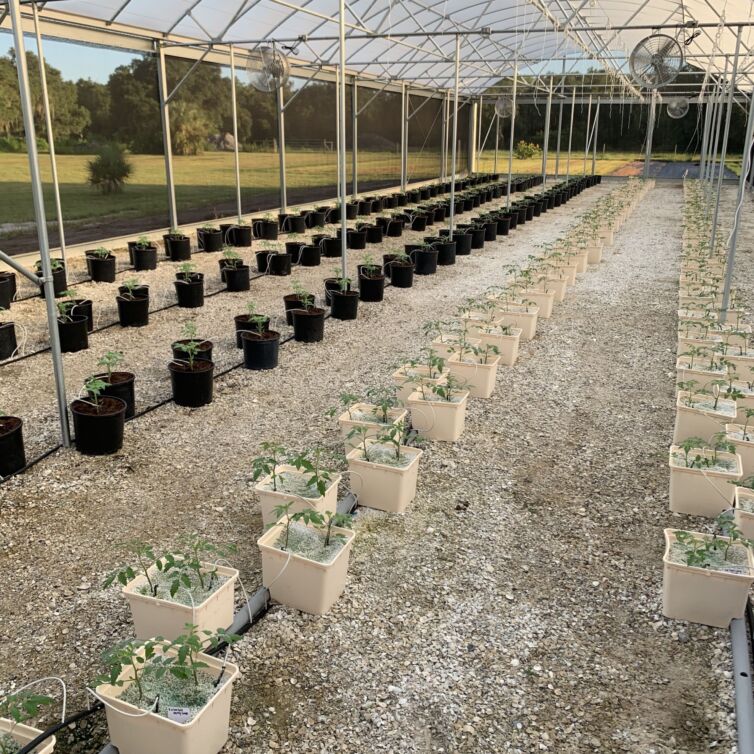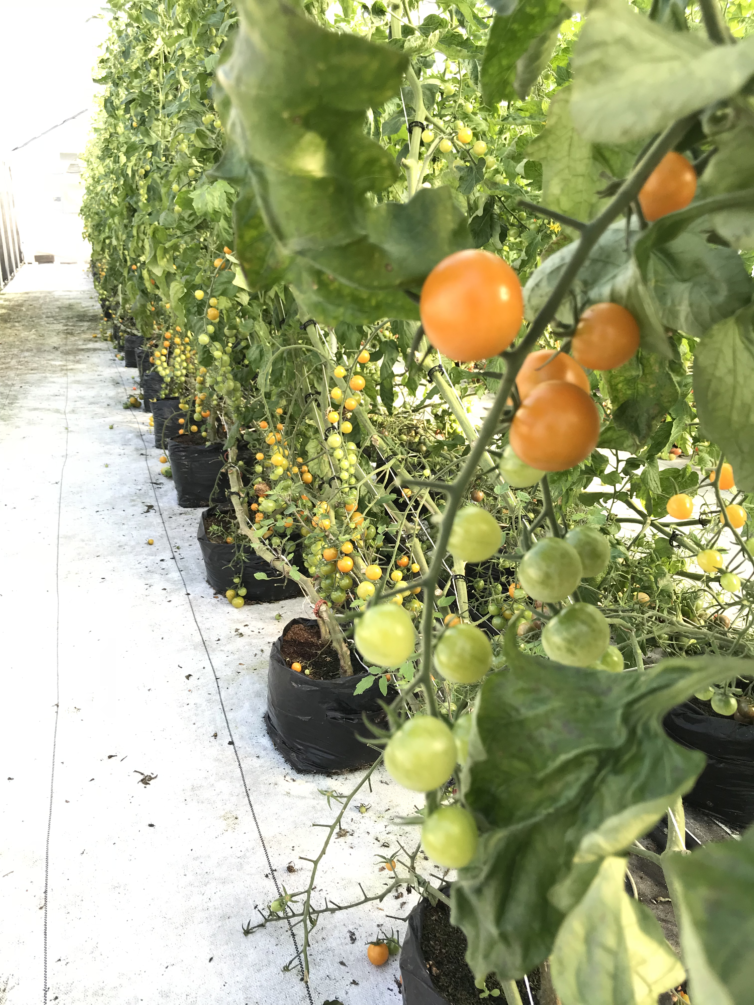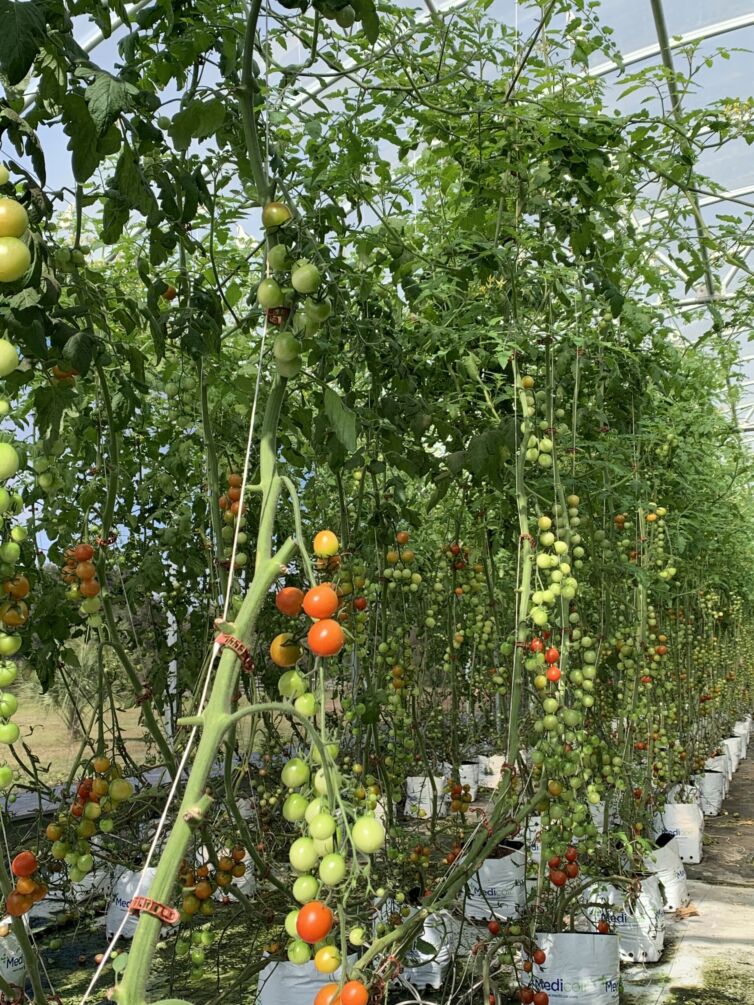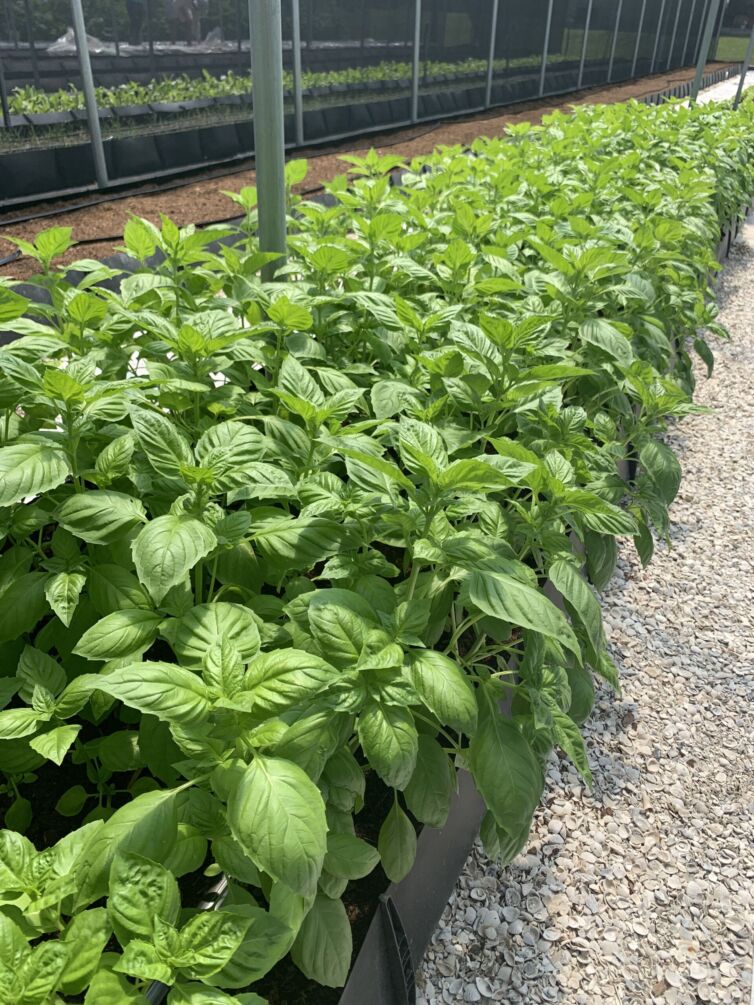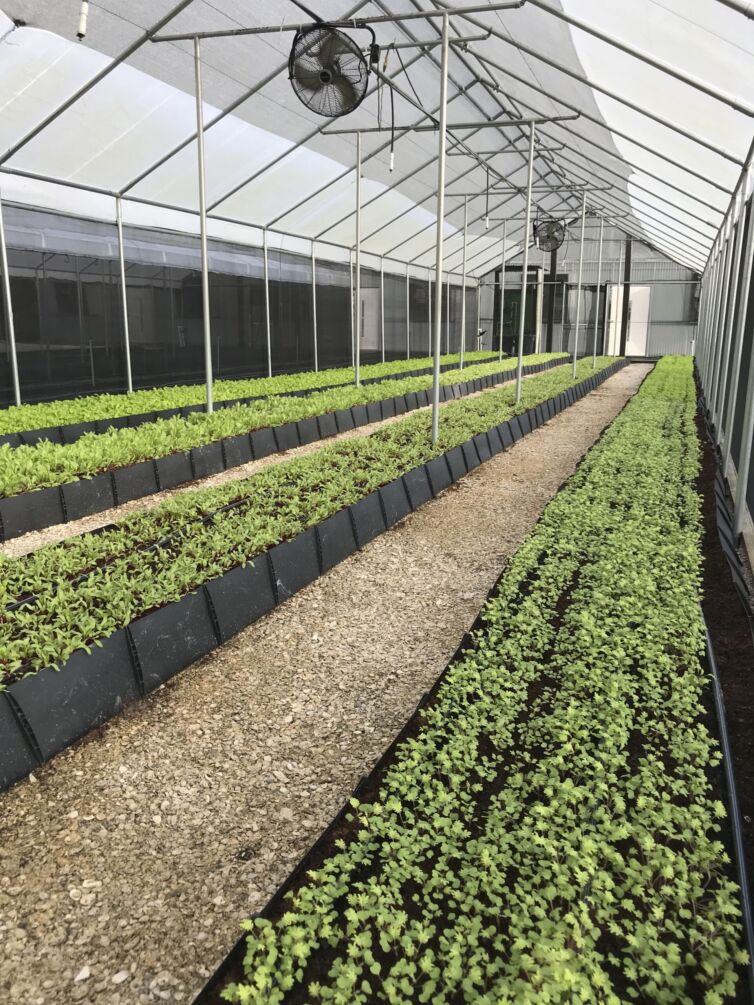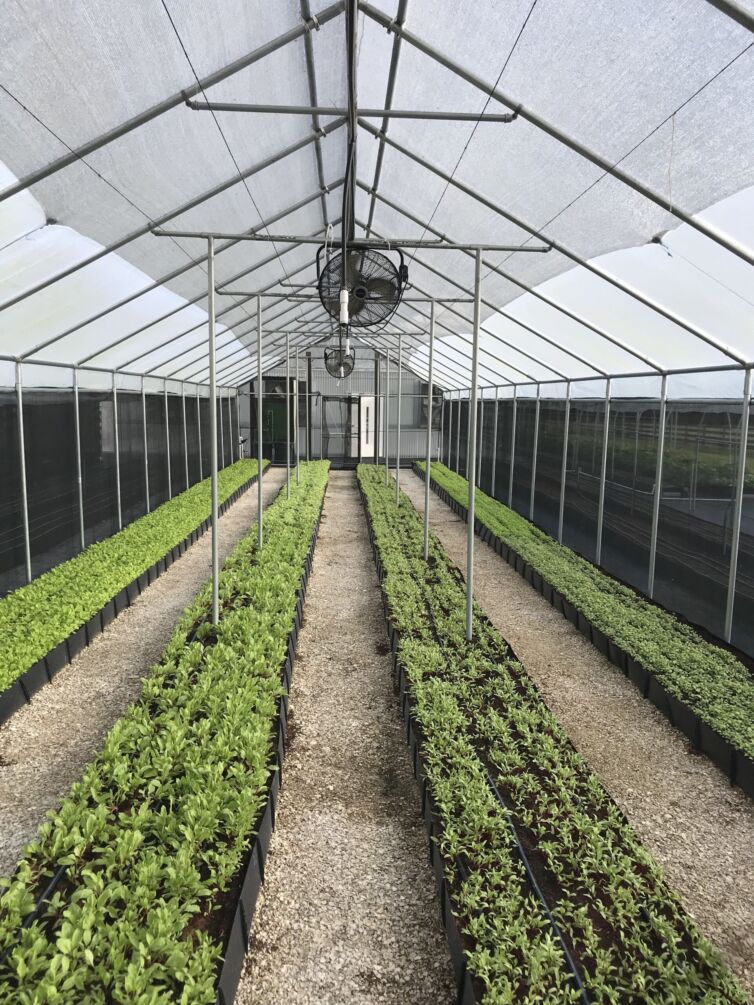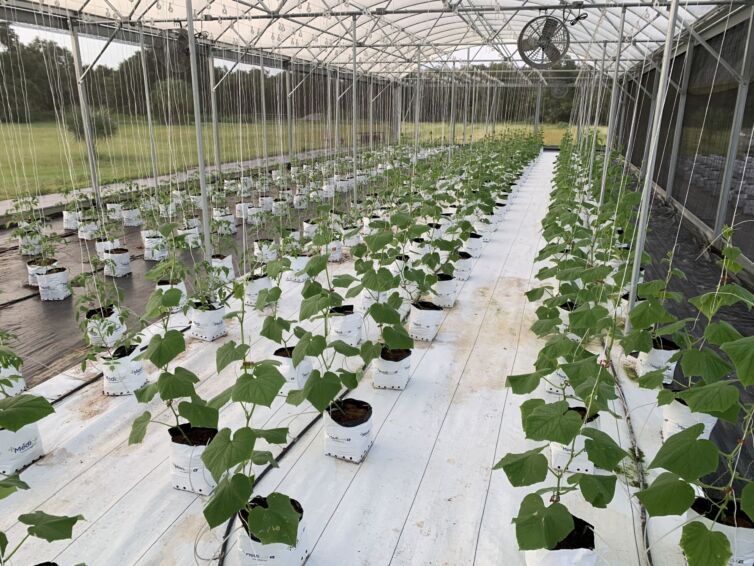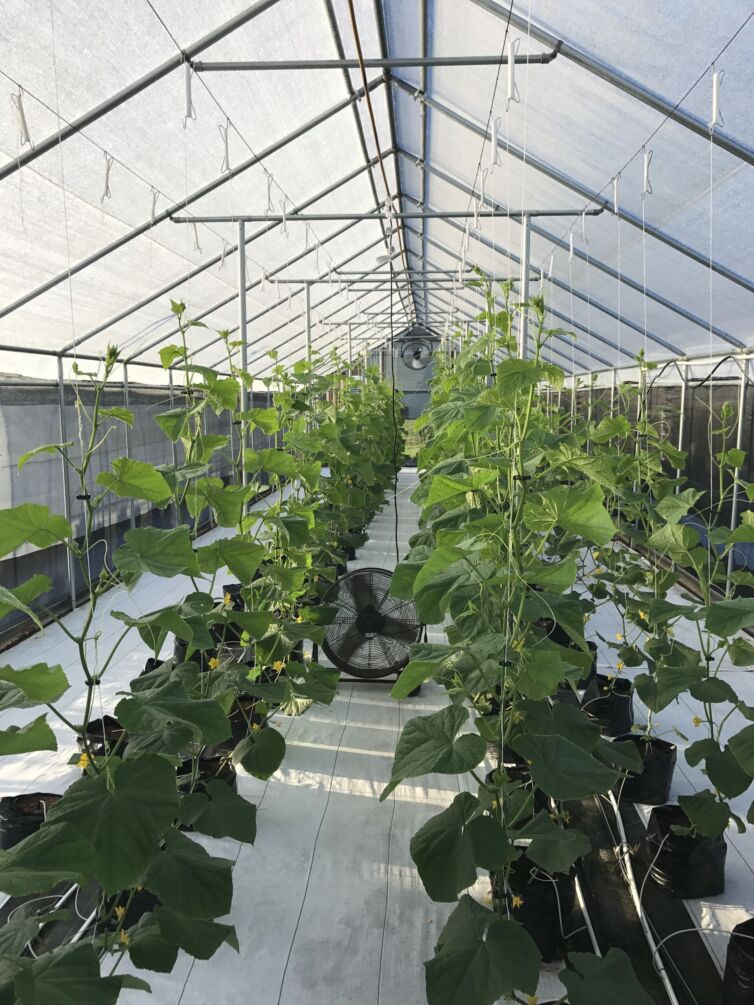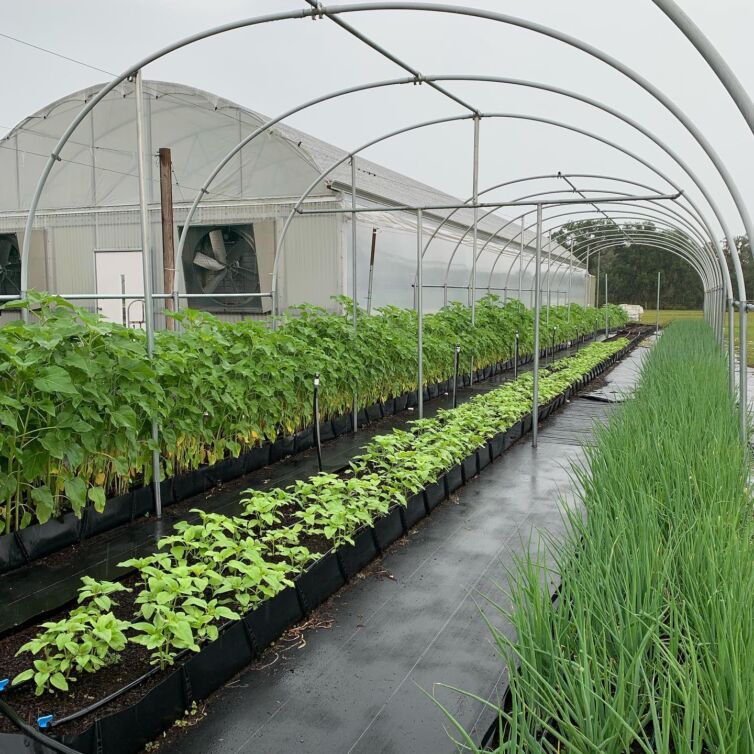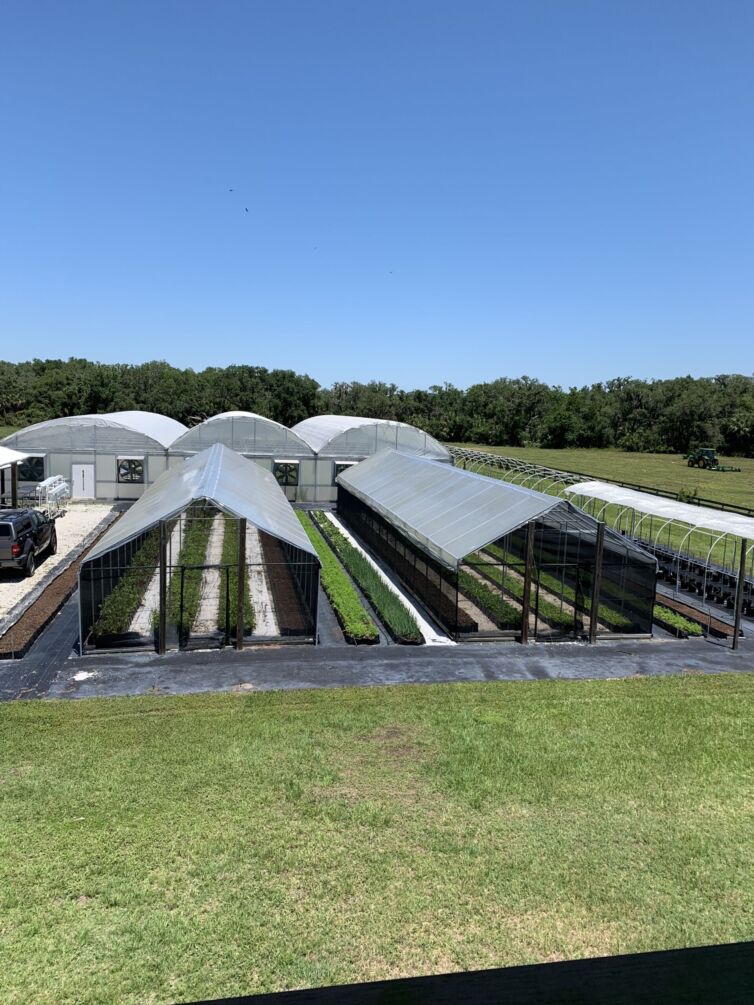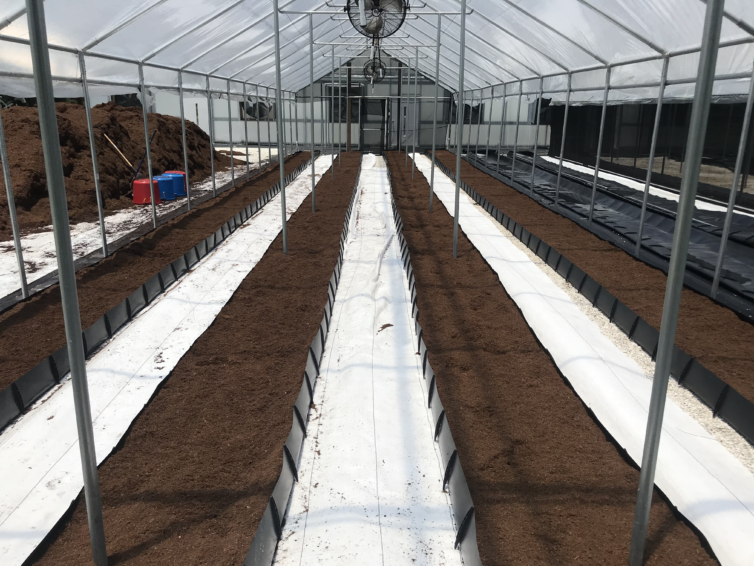HYDROPONICS
We’ve found we are able to produce a quality product that keeps well and tastes amazing, which keeps our customers coming back week after week. Over the years we have learned what works for us and what does not. We’ve found many ways to grow the same vegetables in different hydroponic methods. For instance, all of our lettuces and Swiss chard are always growing in our greenhouses, however, root vegetables like carrots and radishes do fantastic in our hydroponic troughs instead.
Our greenhouses provide the most reliable way to grow year after year. We eliminate the need for any pesticides because the greens are protected in addition to being elevated off the ground. The roots of the plants are always getting the nutrients they need to thrive through our NFT system (nutrient film technique). The water and nutrients are then recycled through the system back to the tank in order to keep the cycle going.
BASIC DIFFERENCES IN THE TWO GROWING METHODS
HYDROPONIC |
ORGANIC |
|---|---|
| -Plant roots spend little energy as nutrients are fed directly | -Plants spend more energy searching for the nutrients supplied to the soil |
| -Water conservator; only about 1/10 of the water used compared to traditional farming | -More water is required to feed the plants as much is soaked throughout soil |
| -Fertilizers feed the plant directly | -Fertilizers feed the soil |
| -Soil and quality of soil is not relevant or used | -Soil quality is imperative for plant growth |
| -Plants are grown in a controlled environment, such as a greenhouse or shade house | -Organic environments may use green or shade houses, but not very typical |
| -Produce is grown above the ground, and does not have any contact with animal residue | -Produce is grown in the dirt and may have environmental or animal residue |
Always expanding, always evolving to what’s best for our farm and the planet. We utilize shipping containers to grow micro greens, and other micro lettuces, sprouts, and shoots.
Our ground troughs are similar to a garden bed, except there is no soil used. We fill our growing toughs with a mixture of coco fiber and pine bark. There are no nutrients in that alone, so we feed the plants exactly what they need. We use these to grow many different things for us, but mostly root vegetables.
Our shade houses don’t protect the plants like the enclosed greenhouses, but they definitely provide a benefit and help us when we get cold snaps (it happens!) or extremely rainy.
Tomatoes and cucumbers grow great in our buckets or bag system and are some of our customers favorite things!
